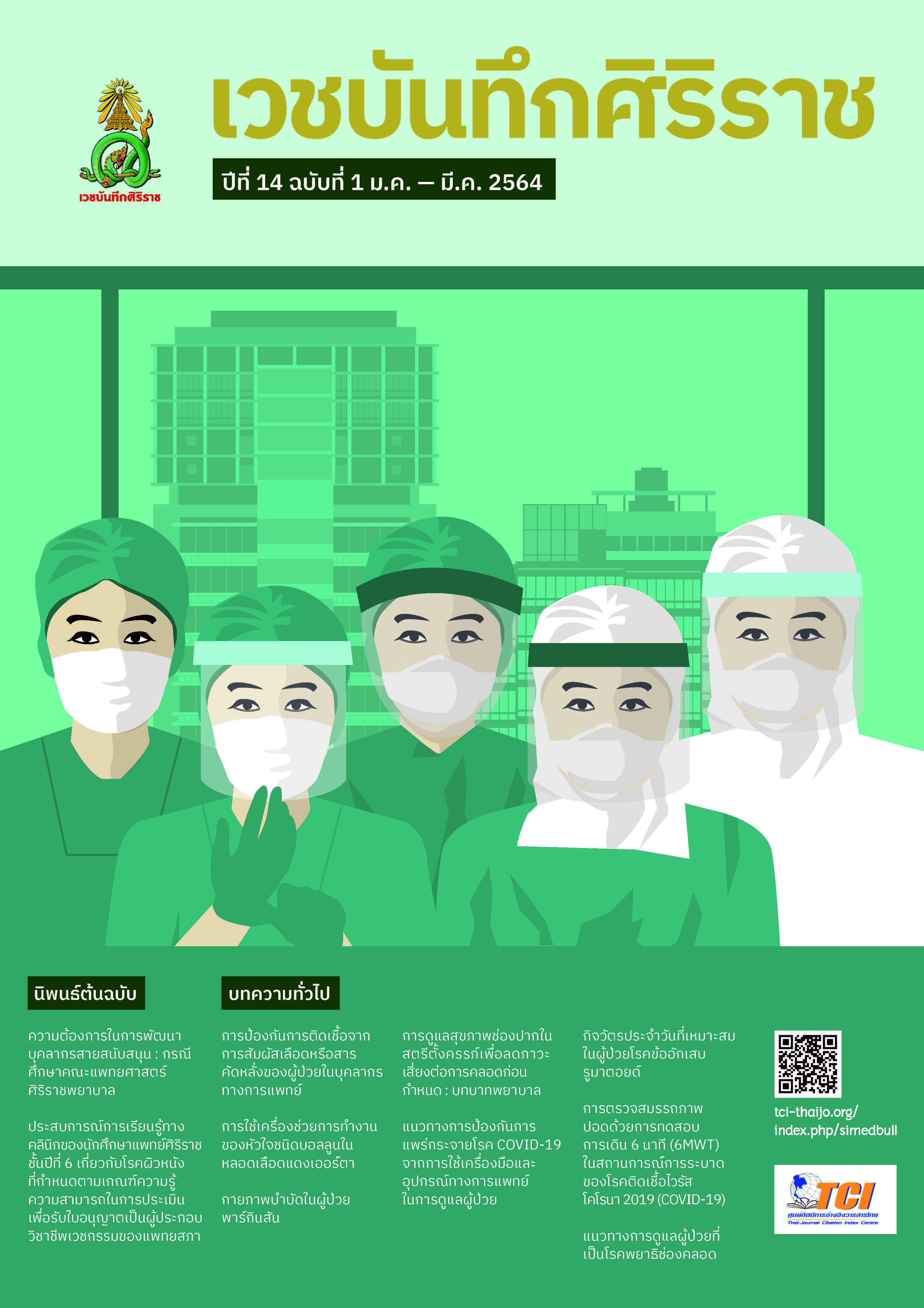The Use of Intra-Aortic Balloon Pump: IABP
Main Article Content
Abstract
In recent decades, tremendous advances have been achieved in intensive care of patients with cardiogenic shock; however, mortality and morbidity from resultant multiple organ failure remain high. Intra-aortic balloon pump has been the most widely used equipment among mechanical circulatory support devices to help patients stabilize hemodynamics and recover from cardiogenic shock from various etiologies for over half of the century. This device enhances organs and coronary perfusion pressure, reduces left ventricular afterload, and increases the cardiac output by working in synchronization with the cardiac cycle and aortic valve mechanic. In this article, we will highlight the principle of counterpulsation, the recent innovation, which has been greatly developed, including hardware and software, current roles, the latest evidence, technical details of the device usage and patient care, weaning guideline, safe removal, and potential complications of the said device. The distinctive use of an extracorporeal membrane oxygenator in comparison with and conjunction with intra-aortic balloon therapy will also be discussed. To help patients stabilize hemodynamics and recover from critical cardiogenic shock or ischemia-reperfusion injury during the cardiac intervention, detailed knowledge is essential for the medical team to establish the position of the counterpulsation device in this high-risk patient subgroup.
Article Details
References
2. van Nunen LX, Noc M, Kapur NK, Patel MR, Perera D, Pijls NH. Usefulness of Intra-aortic Balloon Pump Counterpulsation. Am J Cardiol. 2016;117(3):469-76.
3. Thiele H, Zeymer U, Neumann FJ, Ferenc M, Olbrich HG, Hausleiter J, et al. Intra-aortic balloon counterpulsation in acute myocardial infarction complicated by cardiogenic shock (IABP-SHOCK II): final 12 month results of a randomised, open-label trial. Lancet. 2013;382(9905):1638-45.
4. De Silva K, Lumley M, Kailey B, Alastruey J, Guilcher A, Asrress KN, et al. Coronary and microvascular physiology during intra-aortic balloon counterpulsation. JACC Cardiovasc Interv. 2014;7(6):631-40.
5. Schampaert S, van Nunen LX, Pijls NH, Rutten MC, van Tuijl S, van de Vosse FN, et al. Intra-Aortic Balloon Pump Support in the Isolated Beating Porcine Heart in Nonischemic and Ischemic Pump Failure. Artif Organs. 2015;39(11):931-8.
6. Werdan K, Gielen S, Ebelt H, Hochman JS. Mechanical circulatory support in cardiogenic shock. Eur Heart J. 2014;35(3):156-67.
7. de Waha S, Desch S, Eitel I, Fuernau G, Lurz P, Sandri M, et al. Intra-aortic balloon counterpulsation - basic principles and clinical evidence. Vascul Pharmacol. 2014;60(2):52-6.
8. White JM, Ruygrok PN. Intra-aortic balloon counterpulsation in contemporary practice - where are we? Heart Lung Circ. 2015;24(4):335-41.
9. Theologou T, Bashir M, Rengarajan A, Khan O, Spyt T, Richens D, et al. Preoperative intra aortic balloon pumps in patients undergoing coronary artery bypass grafting. Cochrane Database Syst Rev. 2011(1):CD004472.
10. Arafa OE, Pedersen TH, Svennevig JL, Fosse E, Geiran OR. Intraaortic balloon pump in open heart operations: 10-year follow-up with risk analysis. Ann Thorac Surg. 1998;65(3):741-7.
11. Kim JT, Lee JR, Kim JK, Yoon SZ, Jeon Y, Bahk JH, et al. The carina as a useful radiographic landmark for positioning the intraaortic balloon pump. Anesth Analg. 2007;105(3):735-8.
12. Rodigas PC, Finnegan JO. Technique for removal of percutaneously placed intraaortic balloons. Ann Thorac Surg. 1985;40(1):80-1.
13. Erdogan HB, Goksedef D, Erentug V, Polat A, Bozbuga N, Mansuroglu D, et al. In which patients should sheathless IABP be used? An analysis of vascular complications in 1211 cases. J Card Surg. 2006;21(4):342-6.


